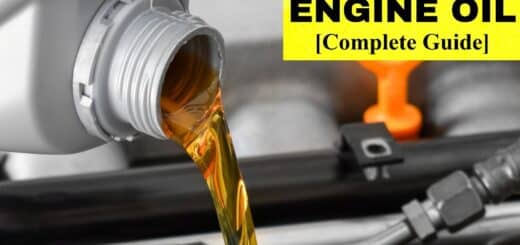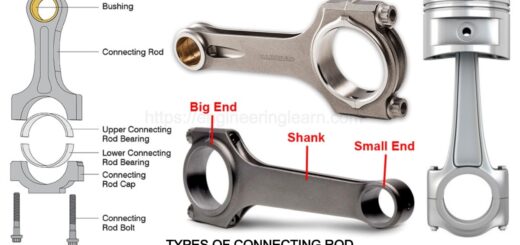25 Parts of Bicycle and Their Function [Pictures, Names & Diagram]
![25 Parts of Bicycle and Their Function [Pictures, Names & Diagram]](https://engineeringlearn.com/wp-content/uploads/2023/05/Parts-of-Bicycles-1024x539.jpg)
Introduction
25 Parts of Bicycle and Their Function [Pictures, Names & Diagram]: – Whether you are simply figuring out how to ride a bicycle or preparing for your next marathon, understanding the parts of a bicycle is significant. In the event that you plan to utilize it frequently, you’re probably going to encounter the usual wear and tear from consistent use, paying little heed to how regularly you maintain it. (Types of Bicycles)
Sure you can sort it out, however, it will be expensive and inconvenient. You’ll have the option to set aside much more cash in the event that you’ll require some investment to become familiar with each part and repair the bicycle on your own.
Modern bicycles are made with handfuls of parts, yet the main ones are their frame, wheels, tires, seating, steering, drivetrain, and brakes. This general simplicity enabled initial bicycle makers to create reliable and simple to utilize bicycle designs.
Parts of Bicycle
- Top Tube
- Seat Tube
- Frame
- Seat Post and Saddle
- Headset
- Seat Stays
- Chain Stays
- Stem and Handlebars
- Head Tube
- Fork
- Down Tube
- Brakes
- Rim Brake vs Disc Brake
- Brake Levers
- Tyres and Wheels
- Bottom Bracket and Crankset
- Rim
- Spokes
- Hub
- Valve (Schrader vs Presta)
- Front Derailleur
- Rear Derailleur
- Cassette / Cogset
- Crankset / Chain-set
- Jockey Wheel
1. Top Tube: ( Parts of Bicycle )
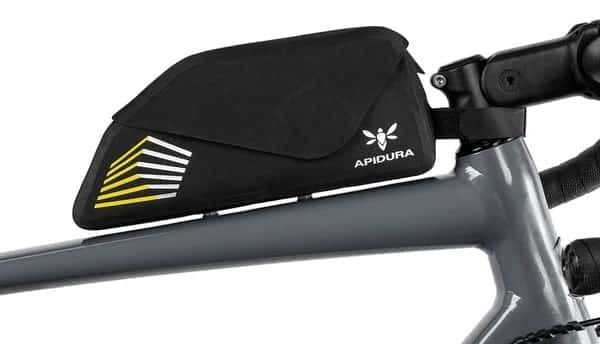
The top tube is otherwise called the cross-bar and it’s the one you step over to mount the bicycle! Normally it runs parallel to the ground, yet it could be somewhat angled. Also, a few bicycles have steeply angled or no top tubes to make it simpler to get on and off the bicycle.
2. Seat Tube: ( Parts of Bicycle )
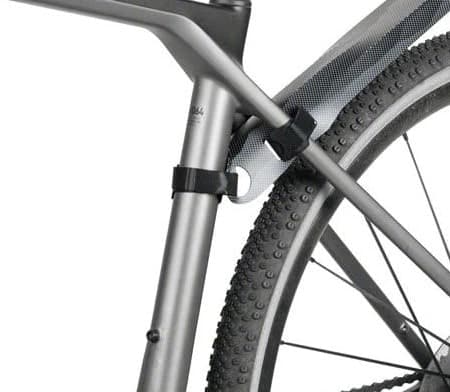
The seat tube runs from underneath the saddle down to the pedals. At the top of the seat tube, the seat post is embedded or inserted. The height of the seat is adjusted by increasing or diminishing how deep the seat post descends into the seat tube.
3. Frame: ( Parts of Bicycle )

The frame is the very foundation of the bicycle as it is where different parts of the bicycle are installed like the wheels, the handlebars, and many more. Finding out about the frame is significant since, in such a case that you need to purchase or replace your bicycle, you should pick one that accommodates your action and your height.
There are a lot of frame materials to browse. Among them are aluminum, carbon fiber, and steel. Aluminum is light and cheap yet you will feel bumps on the road. Carbon fiber is strong and somewhat more costly than aluminum yet it gives a superior road experience.
4. Seat Post and Saddle: ( Parts of Bicycle )
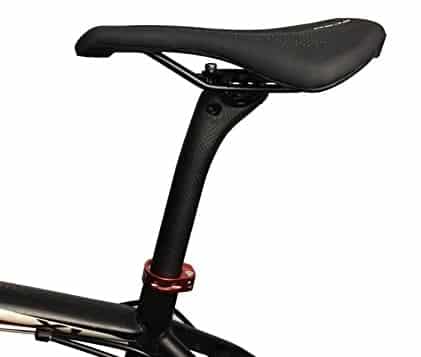
A bicycle Seat-post can be known as a saddle pin, saddle pillar, or saddle pole. It alludes to the tube that stretches out upward to the bicycle saddle from the frame. The seat post can be made of various types of materials and significantly, you need to get a seat post viable with the seat tube on the frame.
The saddle is generally compatible with seat post regardless of sizing so this isn’t an issue the same length as you pick a seat you’re comfortable with.
5. Headset: ( Parts of Bicycle )
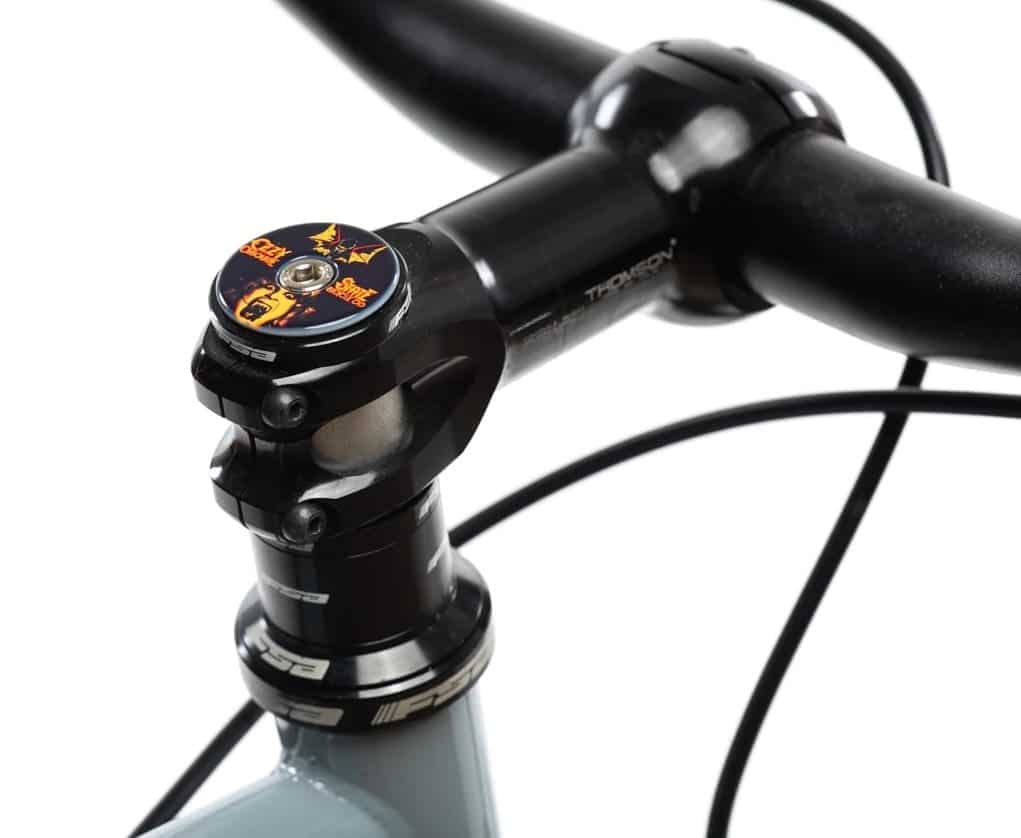
The headset comprises parts including races, cups, and bearings. These are parts that connect or interface the frame to the fork. The headset is first attached or joined to the frame by installing the head tube to the frame. The cups are placed in the holes of the head tube and the bearings are put into these cups.
Better bearings are those that are not sealed or fixed and they should be carefully noted. Sealed bearings are fitted perfectly around the bearing balls and are normally covered in rubber to hide the bearing balls. Unsealed bearings are better since they are more simple to maintain, clean, and yet again grease when essential.
6. Seat Stays: ( Parts of Bicycle )
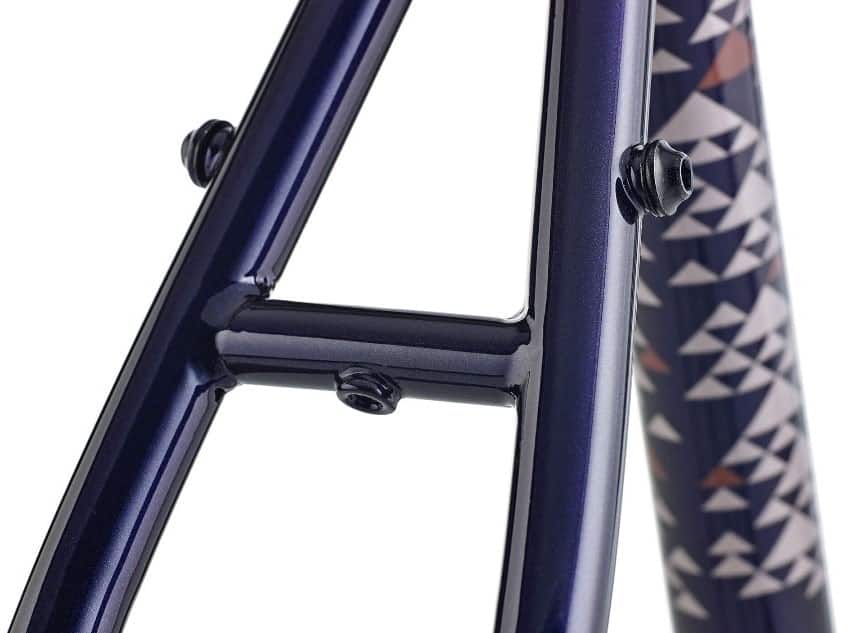
Two more slender tubes that run from under the saddle, down to the back wheel hub are called seat stays. Each seat stay closes at a “rear dropout”. Likewise, each rear or back drop out is associated or connected aside from the axle of the back wheel.
7. Chain Stays: ( Parts of Bicycle )
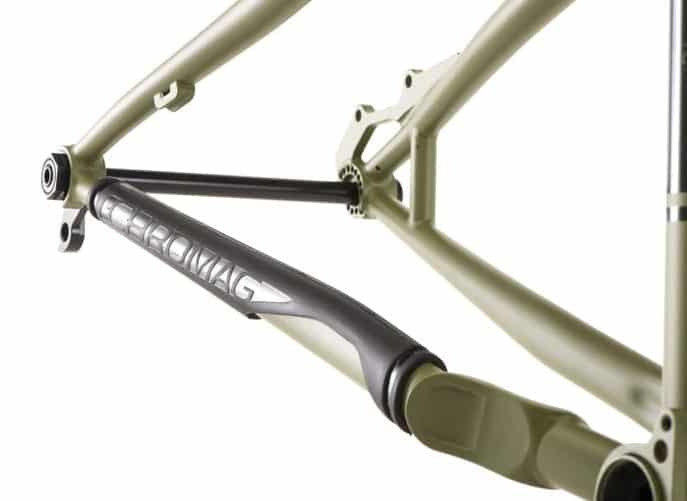
The purpose behind the chain stay as “securing” the rear axle. The bicycle is trying to twist the rear axle with each pedal stroke. If you look from the highest point(top) of the bicycle, it’s endeavoring to twist the rear axle anti-clockwise and compress the drive side chain stay. They run alongside the bicycle chain, which is the reason they’re called chain stays.
8. Stem and Handlebars: ( Parts of Bicycle )
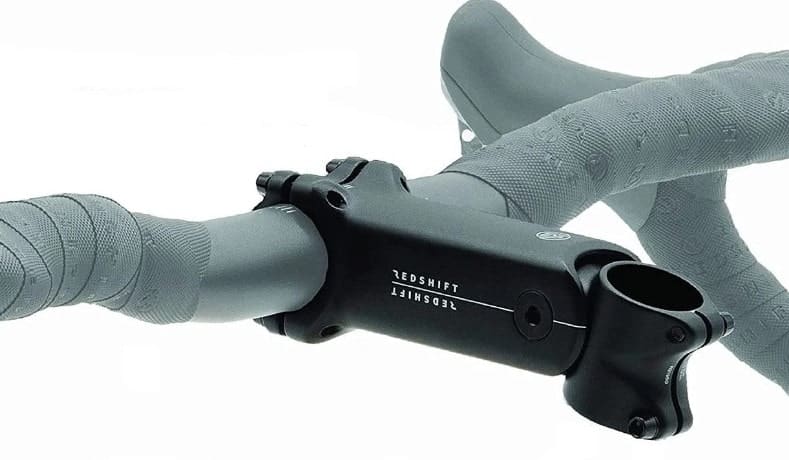
The stem is attached to the steer tube and assists with controlling the bicycle. The steer tube and the stem size and compatibility are essential. You never want to get a stem that is excessively loose or excessively tight for the steer tube since it could make it hard to steer the bicycle.
Ensure that you likewise consider the size of the handlebars you want to get while choosing the right stem. Handlebars are not simple parts as you need to consider the shifter and brake levers while choosing a decent set of handlebars.
9. Head Tube: ( Parts of Bicycle )
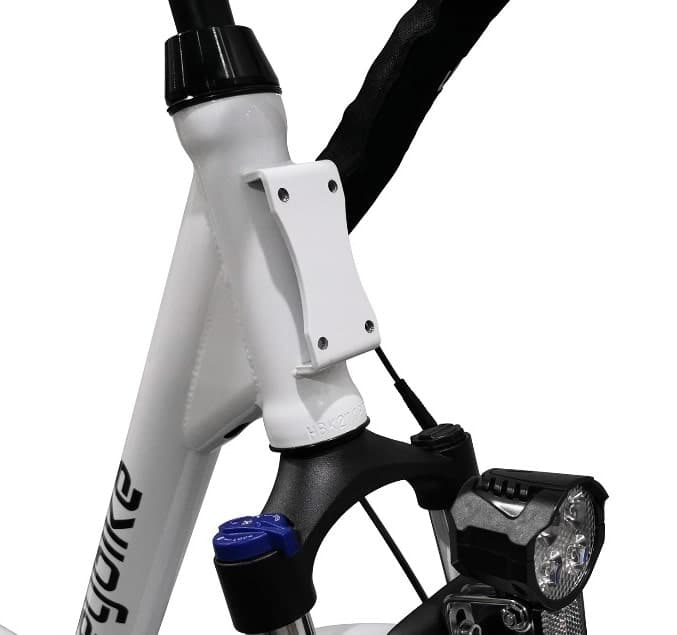
The short tube at the front of the frame is known as the head tube, which further connects or associates the handlebars to the wheel fork. It contains the headset which permits us to steer the front wheel by means of the handlebars.
10. Fork: ( Parts of Bicycle )
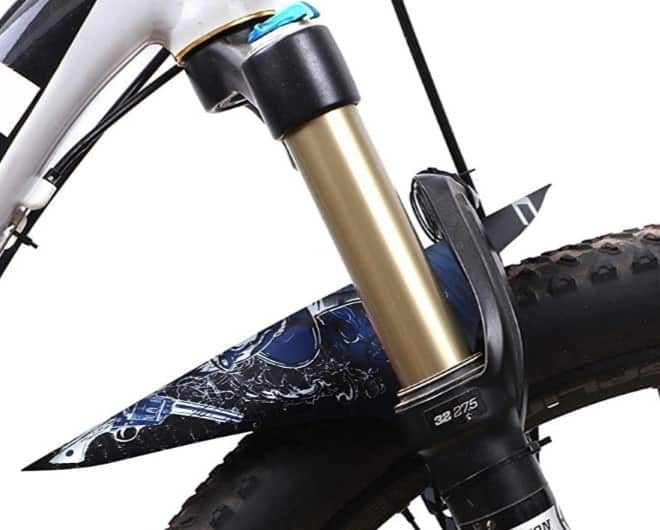
The fork holds the front wheel in place. A fork basically comprises two blades that are connected to a fork crown. The fork’s job is to attach the wheel to the frame which is very important, there are fork designs to fit explicit kinds of bicycles. It will all rely upon what you really want. On the off chance that you will build a bicycle, remember that a frame must be viable to all parts. There are a couple of forks incompatible with specific frames and care should be taken to choose the right one for your necessities.
11. Down Tube: ( Parts of Bicycle )
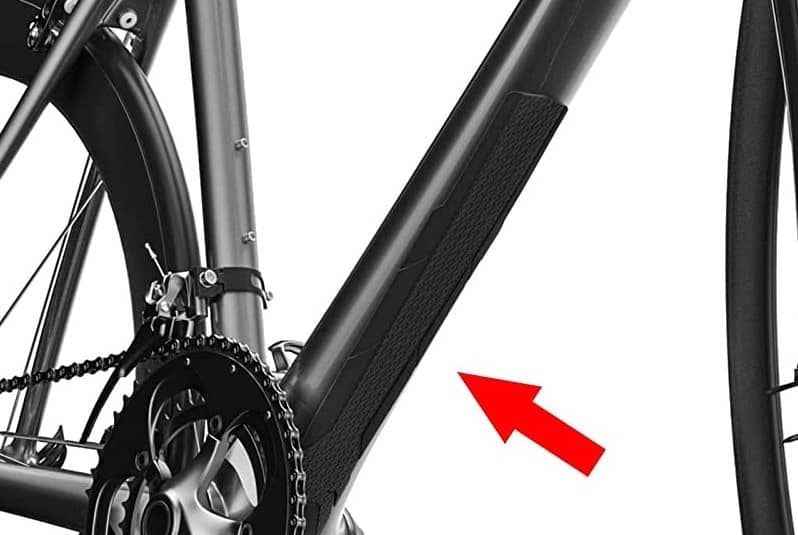
The long tube that runs from the head tube is known as the down tube, to further down to the pedals. It’s typically the thickest piece of the frame. It’s where you’ll track down the enclosure for carrying a water bottle and the logo of the bicycle brand.
12. Brakes: ( Parts of Bicycle )
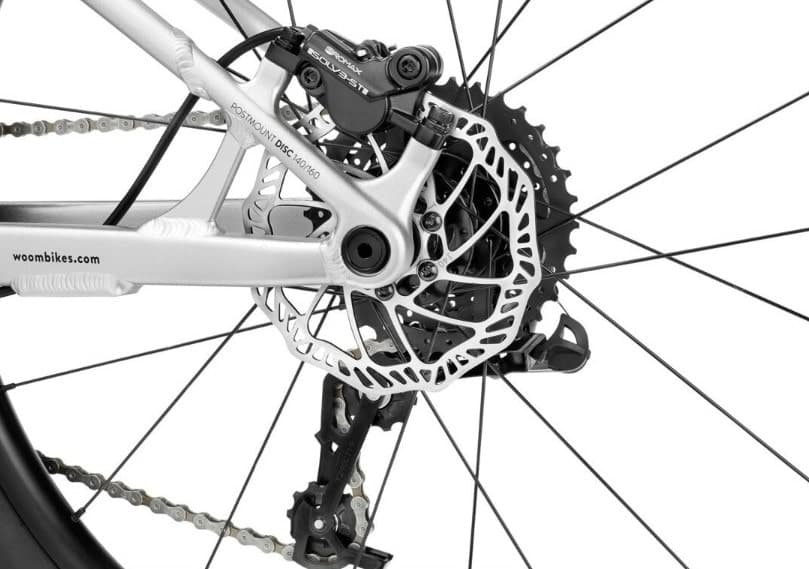
It is an easy decision that brakes are significant and ought to be available on each bicycle, however, there is nobody right brake for all. There are various types of brakes and you should see each sort before you get one or for you to understand your own.
Disc brakes, rim brakes, and hub brakes are three types of brakes which are mostly used in bicycle. Disc brakes have strong stopping power however are very costly. This is on the grounds that they utilize a disc rotor and hydraulic calipers or disc brakes that self-adjust. Rim brakes are normal on roads anywhere if there should be an occurrence of replacement. Hub brakes are of preferable quality over the other two since they are normally made using materials that are weatherproof.
13. Rim Brake vs Disc Brake: ( Parts of Bicycle )
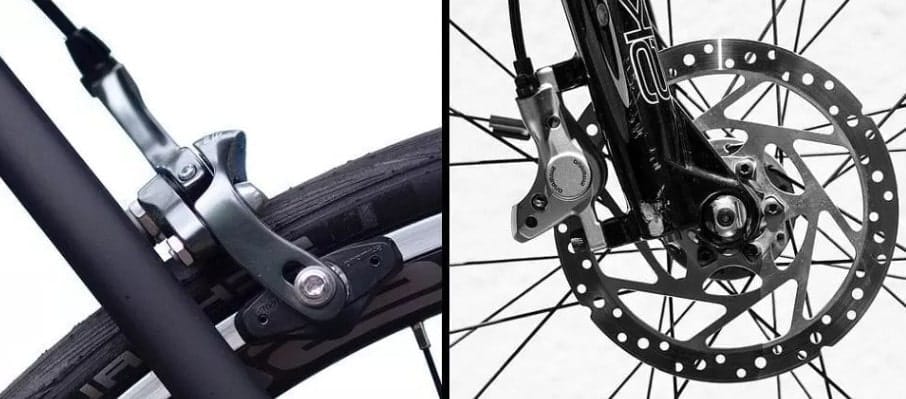
There are two broadly utilized kinds of bicycle brakes: rim brakes and disc brakes. Rim brakes (purported on the grounds that they are applied to the wheel rim) are the most well-known as they’re light, cheap, simple to maintain, and powerful.
14. Brake Levers: ( Parts of Bicycle )
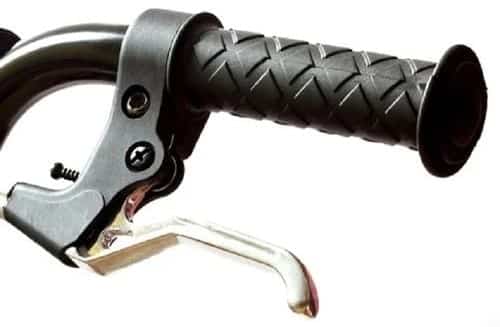
Brake levers are the parts of the bicycle that you squeeze or press to slow down. At times they’re combined with a gear shifter to become a “brake shifter” otherwise called a “brifter”. At first, the brake levers are divided into the drop bar handlebar brake lever and level bar handlebar brake switch with the level bar brake lever having a long pull and short pull brake lever system.
15. Tires and Wheels: ( Parts of Bicycle )
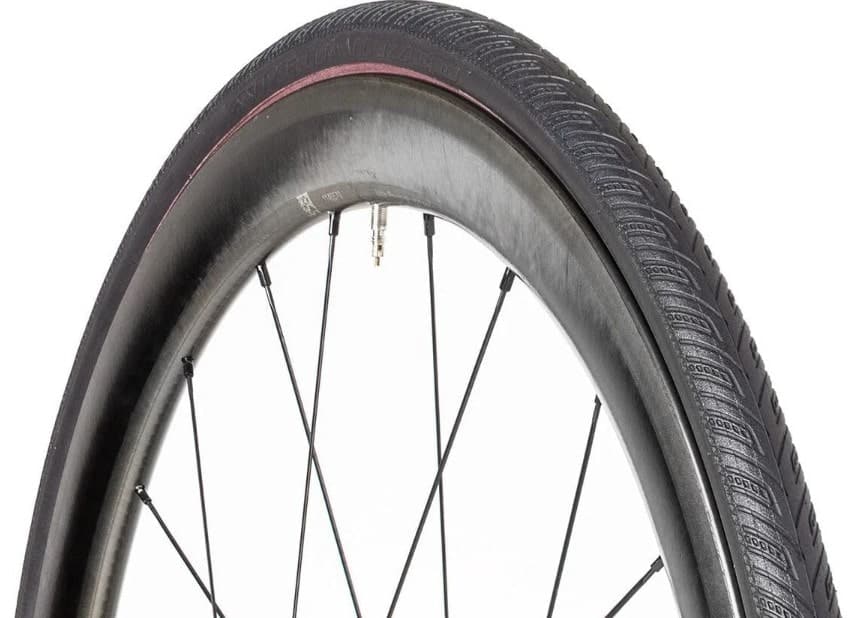
Tires are subject to the sort of bicycle you have. Picking a decent set of tires while building or purchasing your bicycle is subject to where you need to take your bicycle and how frequently you use it. Put reason as your main concern prior to purchasing a bunch of tires.
Within tires are the wheels. The middle of your wheel which contains a set of bearings is known as hub. They determine how to light your wheel is so natural to roll when utilized. The rim is the external part of the wheel and is comprised of carbon or aluminum. The spoke can likewise be comprised of various styles and they are added into the bicycle to empower it to carry extra load.
16. Bottom Bracket and Crankset: ( Parts of Bicycle )
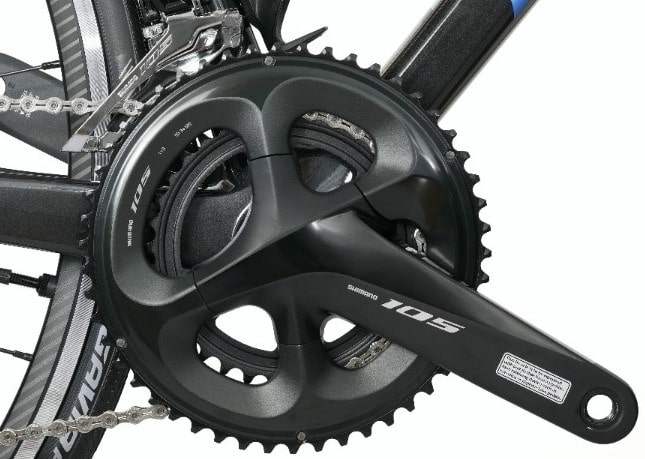
The bottom bracket is the part of the bicycle that connects or interfaces the bicycle to the crank or chain set. The bottom bracket has a spindle where the crank-set is attached or connected and permits the crank-set to turn or rotate. Remember that the bottom bracket is joined or fits into a shell and the distance is determined by the thread pitch. Bicycles might appear to be convoluted, yet when you learn and recognize the parts, they become more clear.
17. Rim: ( Parts of Bicycle )
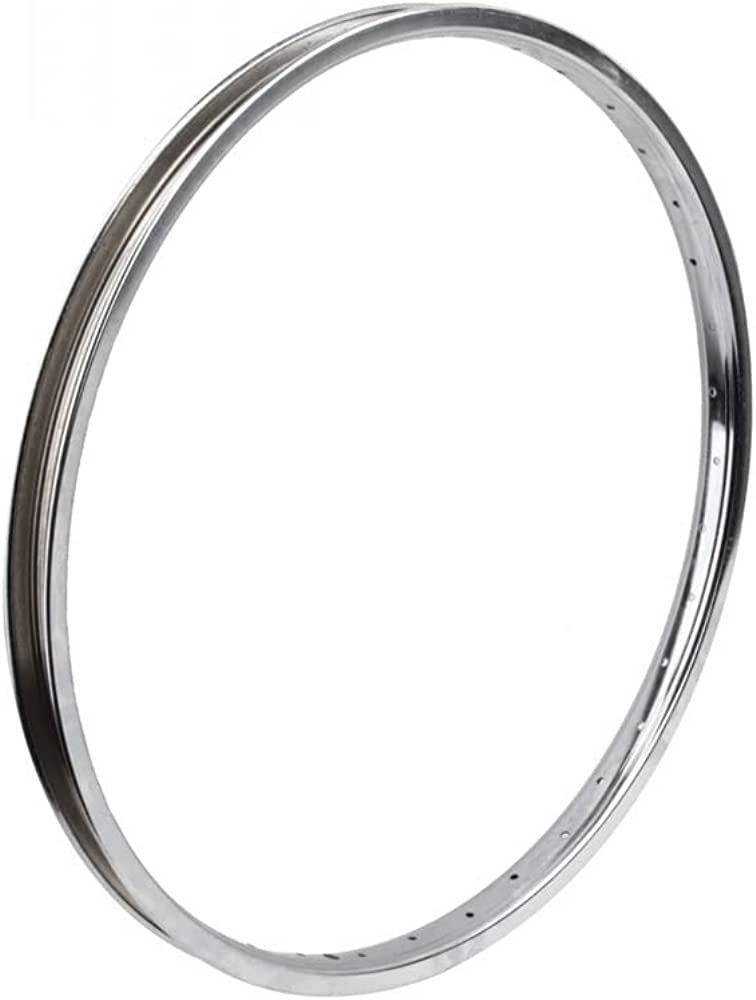
The rim is a circle of metal that shapes the outside of the wheel. Rims used to be made using steel, however, these days they’re normally made using aluminum alloy. On the off chance that they’re to be utilized with rim brakes, there is a smooth surface as an afterthought for the brake pads to grip.
18. Spokes: ( Parts of Bicycle )
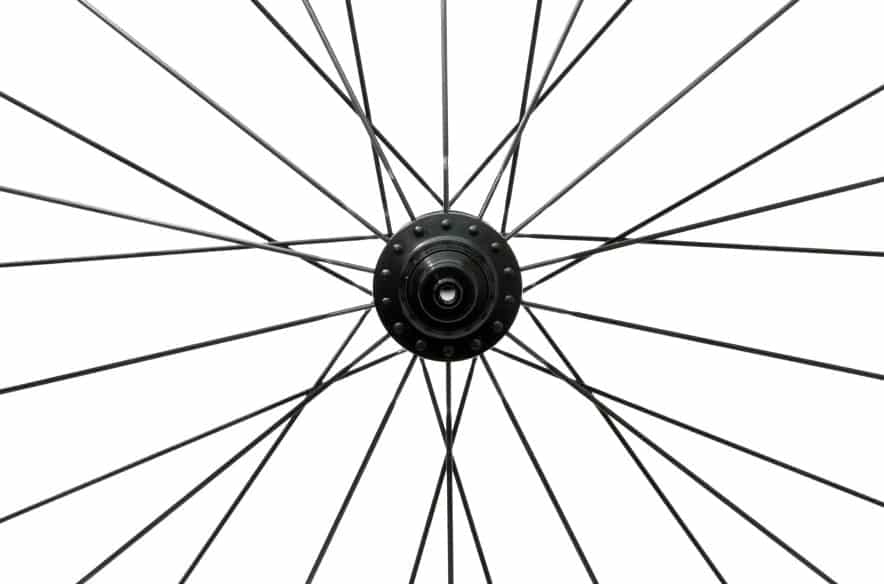
The spokes connect or associate the rim to the hub. Their principal purpose is to move the loads between the hub and the rim, which are brought about by the weight of the rider and the bicycle. There are nuts called nipples which are utilized to adjust the tension, it is only possible when the spokes meet the rim.
19. Hub: ( Parts of Bicycle )
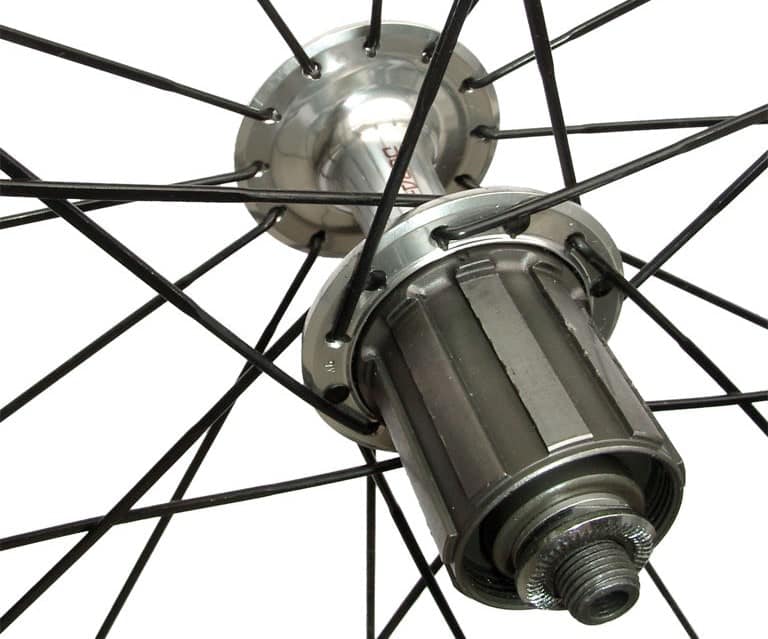
Hub connects or interfaces your chain to your wheels and is an essential part of any bicycle. The connection or association between the wheels and the frame of the bicycle is basically created by the hub, which implies that faster hubs make for a faster bicycle. The axle is the bar that projects on either side, and that attaches to the frame. The wheel on your bicycle is known as the hub. Hubs can fluctuate marginally contingent upon the kind of bicycle you ride.
20. Valve (Schrader vs Presta): ( Parts of Bicycle )
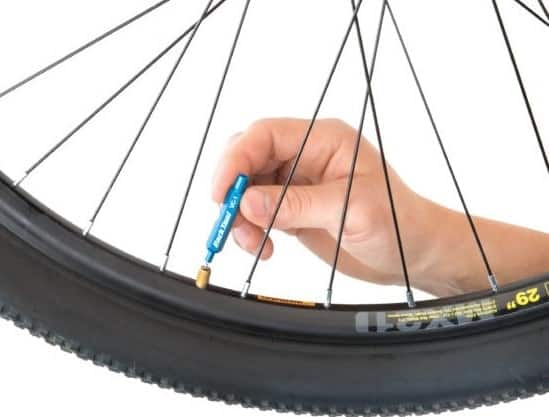
Air is added to, or ousted from the internal tube by a valve that sticks out through a hole in the wheel rim. There are two normally utilized sorts of valve: Schrader and Presta. Schrader valves are additionally utilized on cars and motorbikes. While Presta valves are just utilized on bicycles.
21. Front Derailleur: ( Parts of Bicycle )

The front derailleur is part of the bicycle that moves the chain from one chaining or affixing to the next as you shift gears. So it may be available on bicycles with more than one front gear.
22. Rear Derailleur: ( Parts of Bicycle )
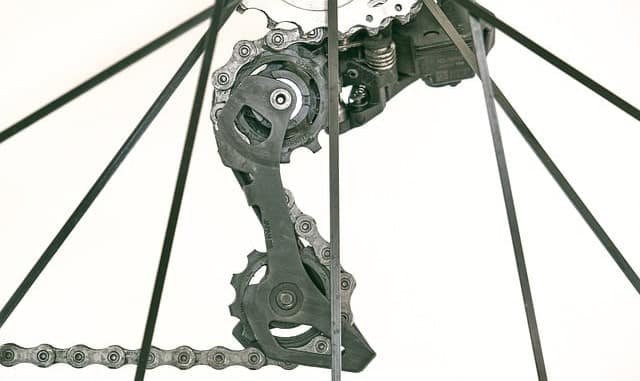
The rear derailleur is the mechanism that filters the chains at the back sprockets. There are various models yet they all offer a similar basic design and usefulness derailleur is secured to the bicycle with a mounting bolt to the frames derailleur. The rear derailleur may be available assuming your bicycle has gears.
23. Cassette / Cogset: ( Parts of Bicycle )
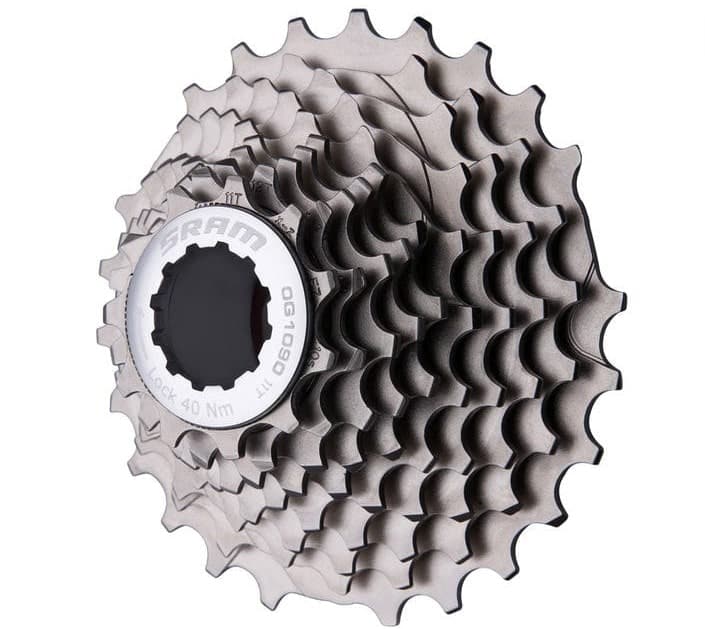
The cassette on your bicycle can be tracked down on the rear wheel and is a group of sprockets that are a part of the drivetrain. it’s critical to take note of that the sprockets in a cassette are designed to work together, as opposed to simply being a collection of cogs. Larger cassette sprockets consider riders to climb even more successfully at a higher cadence. So if your bicycle has any gears, there may be one cog.
24. Crankset / Chain-set: ( Parts of Bicycle )
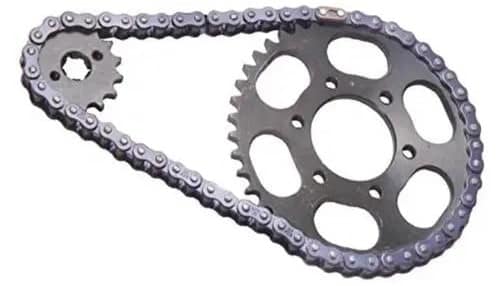
The crank set is frequently alluded to as a chain set, It is one of the essential parts of a bicycle. The crank set is the part of the bicycle that your legs push around, to turn the rear wheel. crank sets are comprised of at least one gears, which are referred as chain-rings, and the cranks or crank arms the arm-like parts that are attached with pedals.
25. Jockey Wheel: ( Parts of Bicycle )
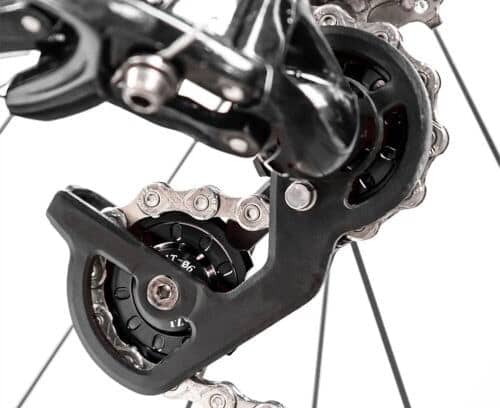
The jockey wheel maintains tension in the chain and keeps it moving flawlessly as you change gear. In the event that your bicycle doesn’t have gears, it’s probably not going to have a jockey wheel except if it’s being utilized as a chain tensioner on a solitary-speed bicycle.
Conclusion
Bicycle is one of the most well-known and oldest methods of transportation. Indeed, even today there are a huge number of individuals all over the world who use cycles to travel. Cycling is likewise viewed as a decent exercise to get in shape. Cycling is urged to promote environmental protection and reduce pollution caused by motor vehicles.
Cycles have various parts however not quite as complicated as automobiles. The following segments of the article feature probably the main parts tracked down in a cycle that we discussed above.
